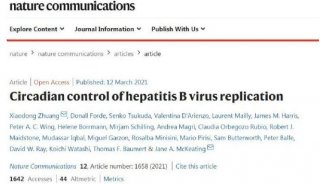Circadian Rhythms

Organisms from flies to humans have daily circadian rhythms entrained with the 24-hour cycle of day and night that regulate many physiological systems. In mammals, there appears to be a master regulator of circadian rhythms in the hypothalamus, as well as additional peripheral mechanisms. The basic framework of the molecular pathways in the cell that produce and maintain these daily rhythms has been elucidated. The central feature of the circadian pathways are two transcription factors, Bmal1 and Clock, that are expressed in a 24 hour cycle and that act together as a heterodimer to regulate the expression of other genes involved in maintaining the circadian rhythm. Bmal1 and Clock activate transcription of multiple Period (per) and Cryptochrome (Cry) genes. When the activity of Bmal1 and Clock is maximal, Per and Cry genes are transcribed, and then translated in the cytoplasm. The translated Per and Cry genes form a complex in the cytoplasm that is transported back into the nucleus. In the nucleus, Per and Cry form a feedback loop that inhibits transcriptional activation by Bmal1 and Clock, lowering their own expression in the process. At the same time, Per and Cry increase transcription of Bmal1 and Clock genes, to initiate the next phase of the cycle once again. This cycle runs autonomously in the cell, causing jet lag during travel, but can be regulated to retrain to changes in the light cycle. Factors that regulate the cycle include casein kinase 1 epsilon (CK1e) that phosphorylates Per2 and induces its degradation. Mutation of PER2 in humans has been genetically linked to changes in human sleep patterns. Further exploration of the factors that regulate circadian rhythms may enable manipulation of the system in sleep disorders.
Contributor: Glenn Croston, PhD
REFERENCES: Russo E. Circadian Rhythm Homology and Divergence. The Scientist 2000 July:pp 14-16 Shearman et al. Science. 2000 May 12;288(5468):1013-9. Interacting molecular loops in the mammalian circadian clock. Toh, KL et al. Science. 2001 Feb 9;291(5506):1040-3. An hPer2 phosphorylation site mutation in familial advanced sleep phase syndrome.
-
科技前沿

-
焦点事件

-
项目成果











